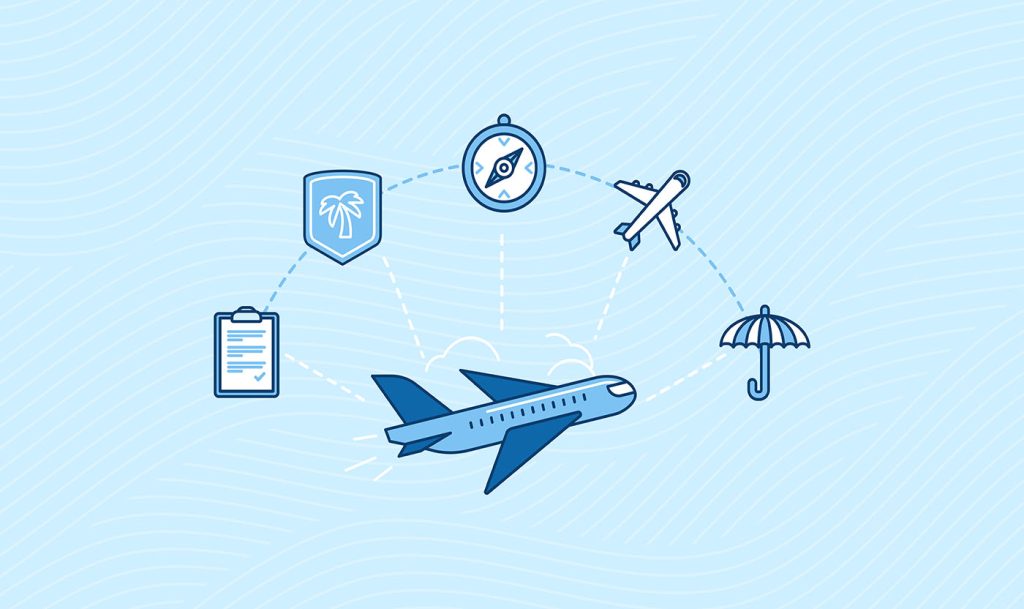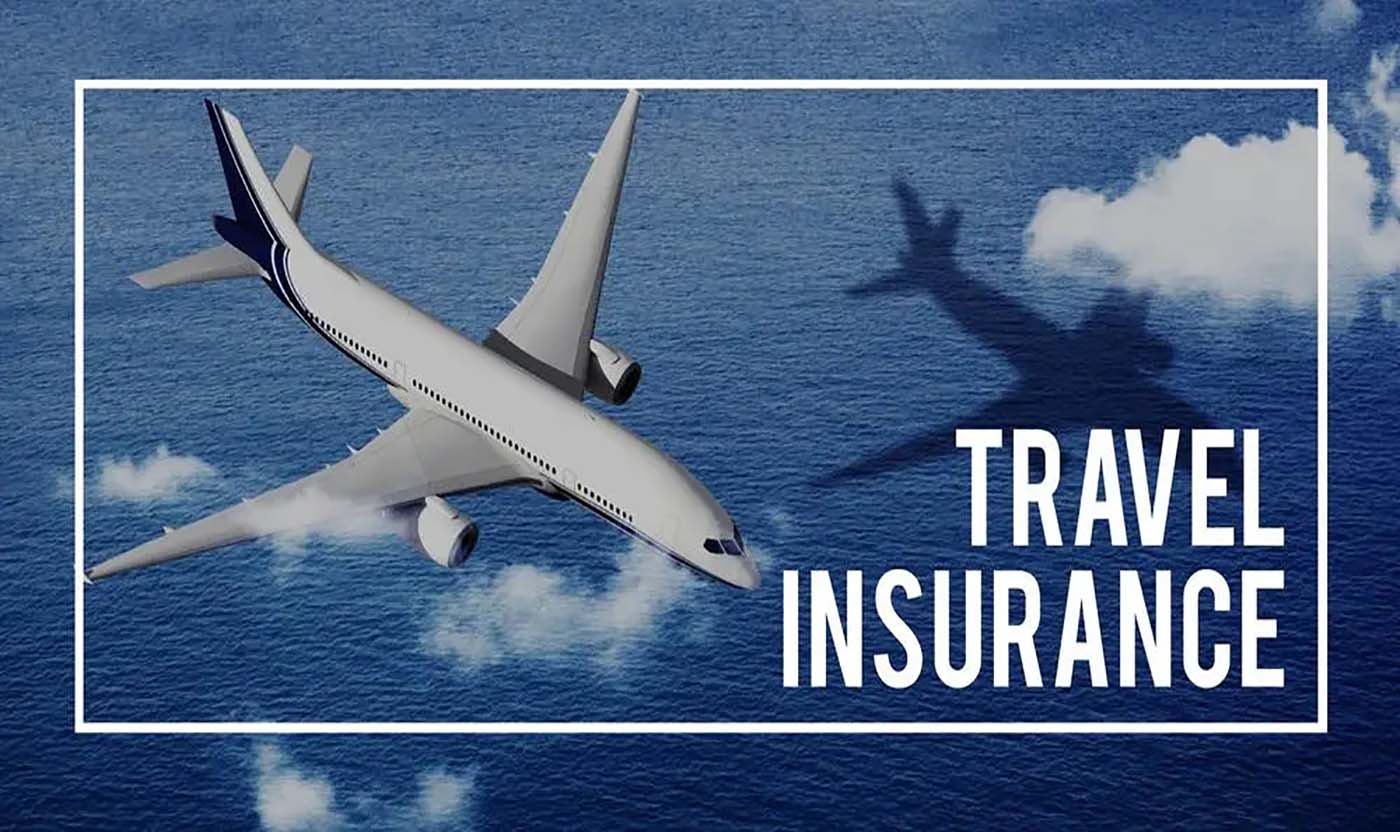Traveling in 2025 feels markedly different from just a few years ago. Airports are busier, routes more frequent, and flight disruptions increasingly common. I remember standing at a gate last summer, watching my connection disappear due to weather, and realizing just how vulnerable even meticulously planned trips can be. It was then that I truly understood the value of airline travel insurance—not as an optional add-on but as an essential part of my travel toolkit. Over the past year, I’ve delved into airline insurance policies, compared coverage across multiple providers, evaluated real-life claims, and assessed how policies hold up during unexpected travel complications. In this guide, I’ll share my insights, tips, and experiences navigating the airline travel insurance landscape in the United States and Europe.
Understanding Airline Travel Insurance
Airline travel insurance in 2025 is designed to protect travelers from a range of unpredictable events. I quickly learned that its value extends far beyond simple flight delays. Comprehensive policies now encompass:
- Trip Cancellation and Interruption: Covers prepaid, non-refundable expenses if illness, injury, or family emergencies force a cancellation or interruption.
- Missed Flights and Connections: Provides reimbursement for missed connections caused by weather, mechanical delays, or other covered events.
- Baggage Loss or Delay: Compensation for delayed, lost, or stolen luggage and personal items.
- Emergency Medical and Evacuation: Covers medical emergencies abroad, including evacuation if local facilities are inadequate.
One surprising realization was how much policies differ across providers. Some airline-offered plans provide only basic coverage at a high premium, while third-party providers offer more comprehensive coverage at lower costs. Platforms like SquareMouth (www.squaremouth.com) and InsureMyTrip (www.insuremytrip.com) have been indispensable, allowing me to compare dozens of policies side by side, check reviews, and even speak to travel insurance experts for personalized advice.
Airline-Offered vs. Third-Party Insurance
Initially, I assumed purchasing insurance directly from the airline would be convenient and sufficient. My first few experiences quickly dispelled that notion. Airlines partner with companies like Allianz Global Assistance, Travel Guard, and AXA Assistance, but the coverage often comes with limitations and higher premiums.
For instance, policies through American Airlines and Delta often covered up to 100% of trip costs, but premiums hovered around 11–12% of total trip expenses—significantly higher than comparable third-party plans priced between 5–10%. I realized that using third-party providers not only reduced costs but often provided broader coverage, especially for emergency medical care and baggage delays.
One of my first independent insurance experiences through SquareMouth was enlightening. I input my travel dates and destinations, received multiple policy quotes within minutes, and could easily filter for maximum coverage, claims responsiveness, and affordability. The platform even allows live consultation with travel insurance experts, which helped me navigate complex terms like “trip interruption,” “cancel for any reason,” and “pre-existing medical condition waivers.”

Evaluating Coverage: My Personal Checklist
After numerous trips and claims, I developed a checklist to evaluate airline travel insurance:
- Trip Cancellation/Interruption: I prioritize plans that cover 100% of prepaid, non-refundable costs, including accommodations, tours, and special events.
- Medical/Emergency Evacuation: For international trips, I aim for at least \$50,000 in medical coverage and \$100,000 in evacuation coverage.
- Baggage Coverage: Essential for long-haul flights. I check the limit for both loss and delayed baggage and the minimum hours before compensation applies.
- Travel Delay/Missed Connections: I evaluate policies based on hourly coverage, reimbursements for meals, lodging, and alternative transportation.
- Exclusions & Fine Print: Understanding what isn’t covered is just as important. Adventure activities, pre-existing conditions, or extreme weather often require additional riders.
I remember a summer trip to Europe where my flight from London to Paris was canceled due to a sudden storm. Thanks to my third-party insurance, I received reimbursement for a hotel stay and rebooked flight. That experience reinforced the practical importance of thoroughly assessing coverage.
Airline-Specific Insurance Options
In 2025, many major airlines continue to provide their own travel insurance plans, usually through partnerships with established providers. Here’s a detailed look at some policies I explored:
Alaska Airlines – Allianz Travel Insurance
The “Travel Insurance II” plan includes:
- Trip cancellation/interruption: 100% of trip costs up to \$10,000
- Emergency medical: \$10,000
- Medical evacuation: \$50,000
- Travel delay: \$150 (6-hour minimum)
- Baggage delay: \$100 if delayed over 24 hours
- Baggage loss: \$500
While the coverage was comprehensive for domestic trips, I found premiums at 11.5% of total trip cost expensive compared to third-party providers. The medical coverage limit is relatively low for international travel.
American Airlines – Allianz Travel Insurance
American Airlines offers multiple Allianz plans, with “Travel Insurance II” being the most comprehensive. Coverage includes 100% of trip costs for cancellation/interruption, emergency medical coverage of \$10,000, and baggage coverage. Like Alaska Airlines, the plan cost around 11.5% of the trip price, which is above the range offered by third-party providers.
Delta Airlines – Allianz Travel Insurance
Delta’s policies are similar, with travel delay coverage, baggage loss protection, and emergency medical coverage included. I found that their plans also lacked sufficient medical coverage for long-haul international trips, prompting me to supplement with a third-party policy.
Hawaiian Airlines – Allianz Travel Insurance
Hawaiian Airlines offers only one plan. Coverage is similar to other Allianz plans, with trip cancellation, interruption, emergency medical, and baggage protection. Premiums were about 10% of trip cost. While sufficient for domestic travel, international travelers like myself need higher medical coverage.
Southwest Airlines – No Direct Travel Insurance
Southwest does not offer airline travel insurance. They rely on their flexible refund policy, which allows travelers to cancel prepaid, non-refundable tickets for future flight credit. I personally use third-party insurance to cover medical emergencies, missed connections, and baggage issues when flying Southwest.
United Airlines – Travel Guard
United partners with Travel Guard, offering the Domestic Air Ticket plan. Coverage includes:
- Trip cancellation/interruption: 100–125% of trip cost
- Travel delay: \$200 per day, max \$600, with 5-hour minimum
- Baggage coverage: \$500
This plan excels at cancellation and delay protection but provides no medical coverage. I always supplement United’s plan with third-party insurance when traveling abroad.
Third-Party Providers I Recommend
Through research and experience, I’ve found certain third-party providers consistently reliable:
- Allianz Global Assistance: Broad coverage, easy claims portal, multiple plan options.
- Travel Guard: Flexible plans for domestic and international trips, good for business travel.
- AXA Assistance: Excellent customer service and rapid claim processing.
- WorldTrips: Specialized in missed connections and high-value luggage protection.
- @The Edge: Focuses on luggage loss, delay, and reroute coverage.
I always use platforms like SquareMouth and InsureMyTrip to compare these providers, as they consolidate multiple options and allow me to evaluate coverage details and premiums side by side.
Tips for Travelers in 2025
Based on my experience navigating policies this year, I rely on a few key strategies:
- Book Early: Purchasing coverage as soon as flights are booked maximizes protection.
- Use Comparison Platforms: SquareMouth and InsureMyTrip simplify comparisons across multiple providers.
- Check Credit Card Benefits: Many premium cards offer partial travel insurance that can reduce premiums.
- Consider “Any Reason” Coverage: For high-cost trips, this upgrade covers cancellations for reasons not listed in standard policies.
- Document Everything: Keep receipts, boarding passes, medical documentation—claims are smoother when you’re organized.
During a European itinerary, my flight was canceled due to a storm, forcing me to spend a night in Brussels. My third-party insurance reimbursed the hotel, rebooked flights, and even some missed tour fees. That experience demonstrated that proper coverage transforms a potentially stressful situation into a manageable one.

Financial Platforms and Insurance Research
To ensure the reliability of policies, I also cross-reference insurance providers on reputable financial websites:
- NerdWallet (www.nerdwallet.com): Reviews and comparisons for travel insurance and financial products
- The Points Guy (www.thepointsguy.com): Airline and travel insurance analysis
- Kiplinger (www.kiplinger.com): Financial guidance, including insurance insights
- Investopedia (www.investopedia.com): Educational content about insurance, risk management, and travel protection
These platforms provide deeper insights into insurance provider credibility, financial stability, and policy effectiveness.
Real-World Claims Experiences
Across multiple trips in 2025, I have filed claims for flight delays, lost luggage, and emergency medical expenses. Independent providers consistently outperformed airline-offered plans in terms of speed and clarity.
One memorable case involved a lost suitcase en route from New York to Amsterdam. Within 48 hours, my claim was processed, and reimbursement issued for essential items. On a separate occasion, a canceled flight triggered trip interruption coverage, covering hotel, meals, and alternate transportation. These experiences illustrate that travel insurance is more than a safety net—it’s an active tool that keeps my travel plans on track.
Planning for the Unexpected
In 2025, I view airline travel insurance as an essential component of trip planning. From researching destinations to booking flights and accommodations, incorporating insurance into the planning process ensures that unexpected events don’t derail my journey. By combining airline policies with third-party coverage, and verifying terms on platforms like SquareMouth and InsureMyTrip, I am able to travel with confidence.



